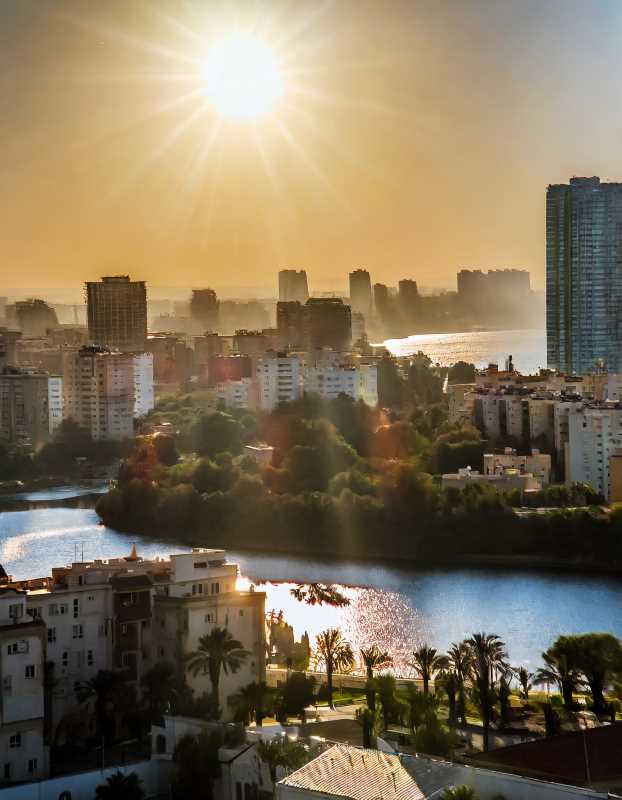Roof Revolutions and Cool Solutions to Urban Heat Islands
Urban heat islands, sizzling city hotspots, are causing temps to soar in over 1,692 cities globally, impacting 70% of the population. To fight back, cool roofs, green spaces, and regulations are essential.

Step into the sizzling cauldron that is the city. In a world where climate change is the heavyweight champion, there's an urban phenomenon heating the streets, quite literally! We're talking about the notorious 'Urban Heat Islands,' and if you thought they were just a bit of urban legend, think again. These blazing hotspots are very real, and they're wreaking havoc in the concrete jungles where over 70% of the population resides.
You might be wondering what exactly is an urban heat island? Well, it's not the secret lair of a caped villain, but it's just as bad for your health. Urban heat islands are those sweltering pockets within a city where the temperatures are hotter than a chili pepper on a summer grill. They're the brainchild of urbanization, overpopulation, asphalt, and the relentless spread of towering skyscrapers. In a nutshell, they are the fiery offspring of human activity.
Now, imagine a place where the mercury climbs by up to a staggering four degrees Celsius, making your morning commute feel like a journey through Dante's Inferno. This isn't the plot of a dystopian sci-fi movie; it's the reality for many areas of Mexico City. Francisco Estrada Porrúa, the Sherlock Holmes of climate change from UNAM's Climate Change Research Program, laid it out for us.
Estrada Porrúa, who could rival Sherlock in his investigative prowess, recently spilled the beans on the urban heat island phenomenon during his talk, “Characterizing the Surface Heat Island in the Metropolitan Zone of the Valley of Mexico.” He unveiled that these urban heat islands are a bit like urban vampires, leeching warmth from their surroundings. They create a simmering disparity between urban areas and their rural neighbors, turning the concrete landscapes into blazing furnaces.
But hey, before you go blaming global warming, let's give credit where it's due. Researchers like Ernesto Jáuregui Ostos have been poking and prodding at this urban hot potato for nearly two centuries. They've dug deep into the factors behind it, pointing fingers at global climate change, geography (longitude and altitude), Mother Nature's quirks, and those pesky pollutants like aerosols and black carbon.
And it gets weirder. The replacement of natural landscapes with concrete jungles also plays a significant role. It's as if the city's makeover includes getting a whole new wardrobe of densely packed materials and structures, all with a penchant for hoarding heat, thanks to human activity.
This isn't just a Mexican hat dance. Urban heat islands are causing ripples in over 1,692 major cities around the globe. That's where more than half of the world's population is hanging out, generating a whopping 80% of a country's GDP. So, yes, these sweltering city pockets are a big deal.

Now, there's a spicy twist to the tale. These local warming bullies often team up with global warming for a double whammy. For example, in the case of Mexico City, if the average heat island increase is three degrees, it could very well rise to four degrees, thanks to the unwelcome assist from global warming.
But fear not, urban warriors! Estrada Porrúa has a solution up his sleeve. He suggests giving the roofs a makeover with materials that are cooler than a cucumber in a snowstorm. Think white roofs and cool floors that refuse to heat the place. These are like the superhero capes for buildings, saving the day by reflecting radiation and cooling things down.
These cooler-than-thou roofs aren't just a fashion statement; they have a mission. They aim to increase a city's 'albedo,' which is essentially how much sunlight a surface reflects compared to how much it absorbs. A high albedo means cooler cities. And the good news is, promoting these rooftops in new and existing buildings can make the urban heat island vanish faster than an ice cream cone on a scorching summer day.
But that's not all. To take the heat down a notch, we need to make sure state construction regulations and climate change laws are hip to these cool changes. And please keep in mind the greenery – we need more green areas. Not only because they're aesthetically pleasing, but because they can reduce local temperatures by a cool one to five degrees Celsius through a magical combo of evapotranspiration and the soothing shade they provide.
So, the next time you're sweltering in a concrete jungle, remember, there's hope for cooler, shadier days. It might not be a superhero movie, but it's a quest to save our cities from the fiery grip of urban heat islands.




